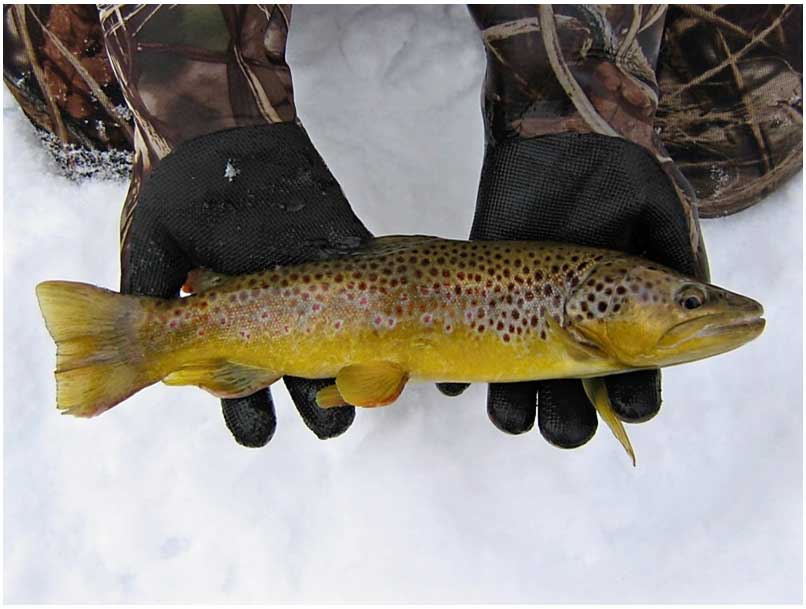By Jane Mazack
Exploring Daley Creek is a blog series that investigates the biological and physical processes at work in a small stream in Minnesota and what it means to consider rivers in a scientific framework. Follow along to learn more about life in the stream and its broader connections, both in the present and as we consider a future of climate change.
If you examine the stomach contents of a brown trout from Daley Creek, you’ll most likely find midges. If there’s an emergence event occurring, you’ll most likely find hundreds of midges – a pupal midge, floating to the water’s surface, is an easy and tasty target for a hungry fish.
Brown trout. Photo by the author, all rights reserved.
Groundwater-fed streams like Daley Creek provide ideal habitat for trout. Brook and brown trout rely on aquatic insects as a primary component of their diet, especially when winter conditions reduce terrestrial stream inputs.
Cold-adapted midges are relatively abundant in the winter, and as such, are common prey items in trout diets. But you’ll also find other insects in Daley Creek and in trout diets. Caddisfly, mayfly, and stonefly larvae are all common in groundwater-fed streams.
But what do these insects eat? While some insects are predators, many species rely on plant material for the bulk of their diets, and are often characterized by their feeding methods. “Shredders”, including some stoneflies, break down large plant and leaf material that falls into the stream. Just downstream, caddisflies, black flies, and others attach themselves to rocks on the stream bed, waiting to filter the resultant fine particulate material.
In contrast, snails and beetles are often characterized as grazers. They, unlike shredders, feed primarily on in-stream plant sources like algae, which covers rocks. This diversity of resource utilization, and diversity of insect species, is what makes Daley Creek healthy. Without a stable base to their food web, trout populations are less resistant to disturbance and more vulnerable to harsh conditions.
The writing and analysis of this blog series were conducted under the auspices of the John E. Sawyer Seminar “Making the Mississippi: Formulating New Water Narratives for the 21st Century”. Sawyer seminars are funded by the Andrew Mellon Foundation; further information about “Making the Mississippi” can be found here.
